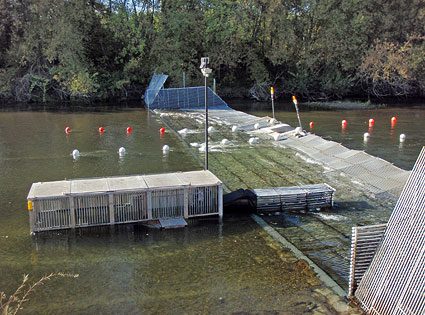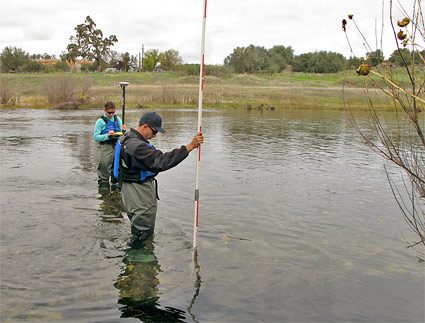Wednesday November 24, 2010

This is the first post in a series that will chronicle the fabrication of a fish counting weir from site selection to installation. Check out our post Fish Counting Weir to learn about how to use weirs to monitor fishes in rivers.

To evaluate whether a fish weir is an appropriate tool for counting fish, or even excluding fish from a river reach, a site must be selected and conditions evaluated. When choosing a site, think wider is better, since a wider channel will allow higher flows to pass with the least increase in depth and velocity. The second factor to consider is the channel cross section profile; an even, level substrate without boulders and scour holes is best. The third factor to consider is the average water depth; the minimum depth should be no less than 1 ft. and maximum depth should be no more than 5 ft. (depending on velocity and debris). If the depth is less than 1 ft. fish may not be able to navigate through the passing chute, which increases the chance of impinging fish under the weir and, if using a Vaki Riverwatcher, reduces the scanner function. Maximum depth is limiting because as depth increases cleaning debris off the resistance board panels becomes more challenging. This may be less of an issue depending on the amount and type of debris in the watershed. Additionally, if the water becomes too deep, it may not be possible to trap fish or maintain electronic monitoring equipment. Although a resistance board weir can operate under variable velocities and flow conditions, each application is unique and requires creative modifications in the field. Look for upcoming posts chronicling the process of weir fabrication.
See the other posts from this how to series:
Fish counting weir: substrate rail
Fish counting weir: resistance weir panels
Fish counting weir: rigid weir and bulkhead
Fish counting weir: chutes and liveboxes
